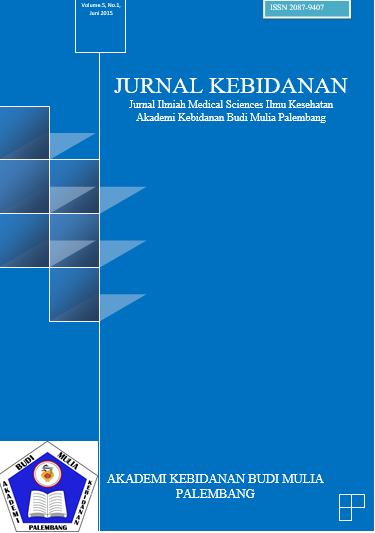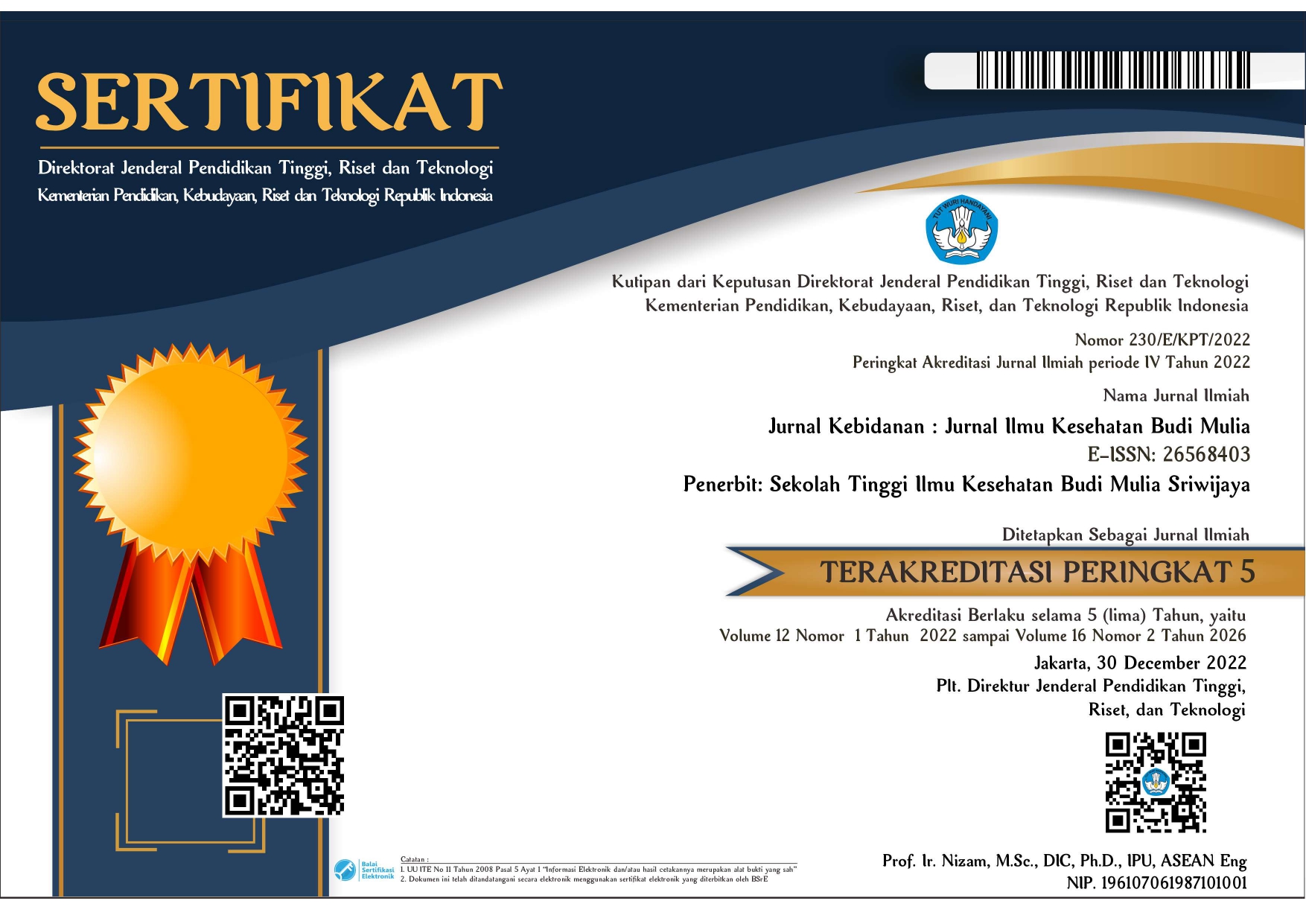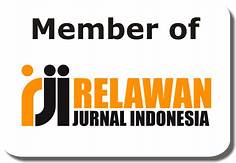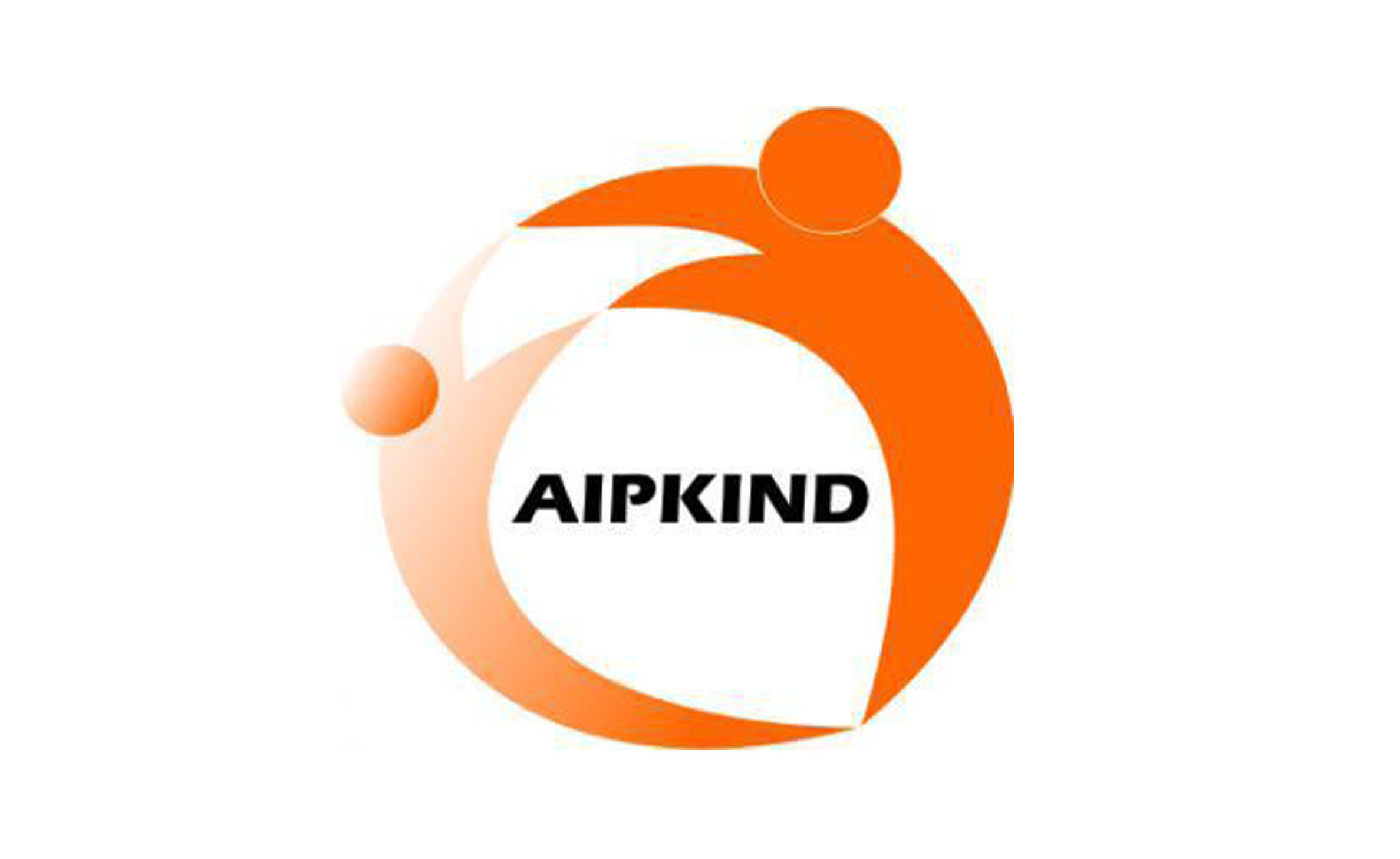HUBUNGAN ANTARA LINGKUNGAN DAN UMUR DENGAN KEJADIAN ISPA PADA BALITA DI PUSKESMAS SOSIAL TAHUN 2014
Abstract
ABSTRACT
The acuteof Respiratory infection is still the first stage infigure Toddler spain. Factors affecting the Acute Respiratory Infections among others, nutritional status, age, low birth weight, Exclusive breastfeeding, maternal education, and infant immunization status, unclean environment and the level of health care is lacking. The purpose of the study was to determine the relationship between the environmentand the incidence of age with Acute Respiratory Infection In Social Health Center Palembang toddler in2014. Survey Design The study was across sectional analytic approach where surroundings and independent variables age and incidence of respiratory Dependent variable collected at the same time. The study population was all the mothers who bring their babies to come to the health center for treatment of Social Palembang 2014, and samples were taken by means of accidental sampling with a sample of 30 respondents the results of univariate analysis of data showed that respondents suffered with respiratory diseasewas 23 percent(76.7%), respondent swithan unhealthy environment totaled 16 bythe percentage(53,3%) ,respondents who are at risk of suffering from The incidence of acute respiratory infections toddler age amounted to10 with the percentage (33,3%). From the results obtained Chi-square is a meaningful relation ship between the Acute Respiratory Infection events where p value =0.031<0.05, and there was no relationship between age and incidence of acute respiratory infections where p value =0.657 > 0,05. Based on the results of the study researchers suggest efforts of health education on how to live a clean and healthy communities such as maintaining and caring for the home and surrounding environment with regular cleaning and care to keep it clean so that it can prevent viruses, bacteria, germ sare not easy to breed.
ABSTRAK
Infeksi Saluran Pernafasan Akut merupakan yang masih menjadi peringkat pertama pada Angka Kesakitan Balita. Faktor-faktor yang mempengaruhi Infeksi Saluran Pernapasan Akut antara lain, Status gizi, Umur, BBLR, Pemberian ASI Eksklusif, Pendidikan ibu, dan Status imunisasi balita, Lingkungan yang tidak bersih dan tingkat pelayanan kesehatan yang kurang. Tujuan penelitian adalah untuk mengetahui hubungan antara Lingkungan dan Umur dengan Kejadian Infeksi Saluran Pernafasan Akut Pada balita di Puskesmas Sosial Palembang Tahun 2014.Desain Penelitian ini adalah Survey analitik dengan pendekatan Cross Sectional dimana variable Independen Lingkungan dan Umur dan varibel Dependen Kejadian ISPA dikumpulkan dalam waktu bersamaan. Populasi penelitian ini adalah semua ibu yang datang membawa balitanya berobat ke Puskesmas Sosial Palembang Tahun 2014, dan sampel diambil dengan cara Accidental Sampling dengan jumlah sampel 30 responden hasil analisi univariat data yang menunjukkan responden yang menderita penyakit ISPA berjumlah 23 dengan persentase (76,7%), responden yang dengan lingkungan tidak sehat berjumlah 16 dengan persentase (53,3%), responden yang umur balitanya beresiko menderita ISPA berjumlah 10 dengan persentase (33,3%). Dari hasil Chi-square didapatkan ada hubungan yang bermakna antara lingkungan dengan kejadian ISPA dimana p value = 0,031 < 0.05, dan tidak ada hubungan antara umur dengan kejadian ISPA dimana p value = 0,657 > 0,05. Berdasarkan hasil penelitian peneliti menyarankan upaya – upaya penyuluhan kesehatan tentang cara hidup bersih pada masyarakat dan sehat seperti menjaga dan merawat lingkungan rumah dan sekitarnya dengan membersihkan secara rutin dan merawatnya agar tetap bersih sehingga dapat mencegah virus, bakteri, kuman tidak mudah berkembang biak.











